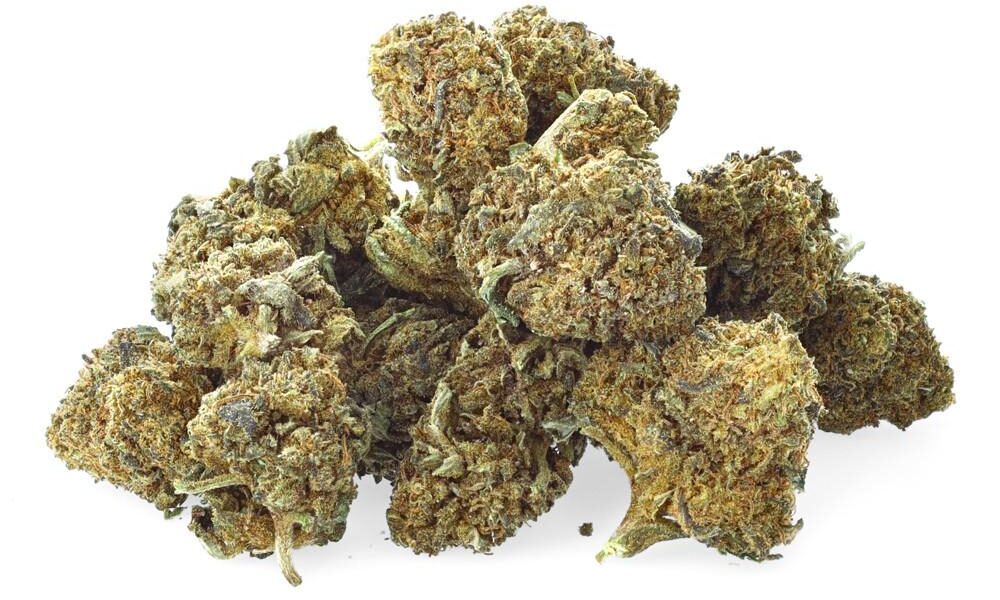As the dialogue surrounding cannabis continues to evolve, it finds itself at the intersection of culture, science, and legislation. Once relegated to the shadows of illegal activity, weed—often a source of intrigue and misunderstanding—has emerged into the limelight, sparking conversations that range from wellness to recreational use. The plant’s complex history, diverse strains, potential benefits, and legal landscape present a rich tapestry of information that deserves careful exploration. In this article, we’ll navigate the multifaceted world of cannabis, offering insights that illuminate its nature, uses, and implications. Whether you are a curious newcomer or a seasoned enthusiast, this guide aims to provide you with a clearer understanding of what weed is and the myriad of ways it intersects with our lives today.
Table of Contents
- Understanding Different Strains and Their Effects
- The Science of Cannabinoids and Terpenes
- Navigating Legalities and Responsible Use
- Tips for Proper Consumption and Safety Practices
- Q&A
- Concluding Remarks
Understanding Different Strains and Their Effects
In the world of cannabis, strains are categorized into three primary groups: Indica, Sativa, and Hybrid. Understanding these classifications can greatly influence your experience and satisfaction. Indica strains are known for their relaxing and sedative effects, making them ideal for nighttime use or stress relief. Common effects include:
- Relaxation: A soothing sensation that calms the body and mind.
- Pain Relief: Effective for chronic pain management.
- Increased Appetite: Often referred to as the “munchies.”
On the other hand, Sativa strains provide a more uplifting and energizing experience, perfect for daytime use or social activities. Their effects often include:
- Increased Creativity: Heightens imaginative thinking and innovation.
- Enhanced Focus: Suitable for tasks that require concentration.
- Mood Elevation: A boost in overall happiness and positivity.
Hybrid strains blend characteristics from both Indica and Sativa, offering a customized experience that can satisfy a range of preferences. Here’s a quick comparison of typical effects:
| Strain Type | Common Uses | Typical Effects |
|---|---|---|
| Indica | Pain relief, insomnia | Relaxing, sleepy |
| Sativa | Creativity, social interaction | Energetic, uplifting |
| Hybrid | Versatile uses | Balanced experience |
The Science of Cannabinoids and Terpenes
The cannabinoid profile of a cannabis strain significantly influences its effects, therapeutic qualities, and overall user experience. Among the plethora of compounds in the cannabis plant, cannabinoids are the most well-known. The most prominent of these is tetrahydrocannabinol (THC), recognized for its psychoactive properties. Another vital cannabinoid is cannabidiol (CBD), praised for its potential therapeutic benefits without the high associated with THC. Other cannabinoids, such as cannabinol (CBN) and cannabigerol (CBG), also contribute unique properties that can affect mood, appetite, and pain perception.
In conjunction with cannabinoids, terpenes play a crucial role in the aromatic and flavor profile of various cannabis strains. These organic compounds are responsible for the distinctive scents of cannabis and can also modulate its effects. Some of the most common terpenes include:
- Myrcene: Known for its earthy aroma and potential sedative effects.
- Limonene: Characterized by its citrus scent and possible mood-enhancing properties.
- Pinene: Offers a fresh pine aroma and may support alertness and memory retention.
Understanding the synergy between cannabinoids and terpenes, often referred to as the “entourage effect,” is essential for both consumers and researchers. This interaction can enhance the overall benefits of cannabis, making it vital for enthusiasts to explore strains that align with their desired experiences.
Navigating Legalities and Responsible Use
Engaging with the world of cannabis requires an understanding of its legal framework, which varies significantly across different regions. As laws continue to evolve, staying informed is essential. Here are some key aspects to consider:
- State vs. Federal Laws: In many areas, cannabis use may be legal on the state level but remain illegal federally. This duality can create confusion about rights and access.
- Age Restrictions: Most jurisdictions impose age restrictions on cannabis use, similar to alcohol. Ensure you are of legal age in your area to avoid penalties.
- Possession Limits: There are often specific limits on how much cannabis one can possess at a time. Familiarize yourself with these regulations to prevent legal trouble.
Responsible use goes hand in hand with legal compliance. Educating yourself not only about the laws but also the effects of cannabis can enhance your experience while minimizing risks. It’s crucial to maintain moderation and consider the following practices:
- Safe Consumption: Choose environments that are safe for consumption and free from distractions to ensure better control.
- Storage and Disposal: Keep cannabis out of reach of minors and dispose of any unused products responsibly to prevent accidental ingestion.
- Driving Laws: Never drive under the influence of cannabis—check your state’s laws regarding driving after consumption to avoid severe consequences.
Tips for Proper Consumption and Safety Practices
Understanding the basics of responsible consumption is essential for a positive experience. Start with a low dosage if you’re new to cannabis, as individual tolerance levels can vary significantly. Gradually increase your intake to gauge how it affects you. It’s advisable to stay hydrated and consume food before and during your session, which can enhance your experience and mitigate potential side effects like dizziness. Make sure to choose a comfortable setting to relax, ideally in the company of trusted friends, especially during your first time. This not only promotes safety but can also enhance enjoyment.
Alongside mindful consumption, being aware of safety practices is crucial. Always store cannabis products in a secure, child-proof location to prevent accidental ingestion. Be clear about the legal status of cannabis in your area, and adhere to regulations on possession and usage. When it comes to sharing, start by educating your friends about their limits and the specific effects of different strains. Consider the following table for common forms of cannabis and their respective effects:
| Consumption Method | Onset Time | Duration |
|---|---|---|
| Edibles | 30-90 minutes | 4-6 hours |
| Vaporizing | Immediate | 1-3 hours |
| Smoking | Immediate | 1-3 hours |
Q&A
Q&A: Exploring the World of Weed
Q1: What is cannabis, and how is it different from marijuana?
A: Cannabis is the scientific name for the plant that includes both marijuana and hemp. Marijuana typically refers to the strains of cannabis that are high in tetrahydrocannabinol (THC), the psychoactive compound that causes a ”high.” Hemp, on the other hand, has a much lower concentration of THC and is often used for industrial purposes, such as textiles and food products.
Q2: What are cannabinoids, and why are they important?
A: Cannabinoids are chemical compounds found in cannabis that interact with the body’s endocannabinoid system. The two most well-known cannabinoids are THC and cannabidiol (CBD). THC is responsible for the euphoric effects sought by recreational users, while CBD is often praised for its potential therapeutic benefits without the intoxicating effects, making it popular among those seeking relief from various conditions.
Q3: How is cannabis consumed?
A: There are several popular methods for consuming cannabis, including smoking, vaping, edibles, tinctures, and topicals. Smoking and vaping deliver cannabinoids directly into the bloodstream through the lungs for rapid effects, while edibles provide a longer-lasting experience as they are processed by the digestive system. Tinctures are alcohol-based extracts taken sublingually, and topicals are applied directly to the skin for localized relief.
Q4: What are some of the potential benefits of using cannabis?
A: Research has suggested several potential benefits of cannabis use, particularly for medicinal purposes. These include pain relief, reduction of anxiety and depression symptoms, alleviation of nausea (especially for chemotherapy patients), and improvement in sleep quality. However, it’s essential to note that effects can vary significantly from person to person, and more research is needed to fully understand these benefits.
Q5: Are there any risks associated with cannabis use?
A: Yes, there are potential risks, particularly with excessive or unregulated use. Short-term effects may include impaired memory, altered judgment, and decreased motor coordination. Long-term use, especially starting at a young age, may be associated with mental health issues and dependence. It’s crucial for users to be informed and cautious, particularly with THC-rich products.
Q6: Is cannabis legal everywhere?
A: Cannabis legality varies widely around the world. In some places, it has been fully legalized for both medical and recreational use, while others may allow only medical use, and some have strict prohibitions. Checking local laws and regulations is necessary if you’re considering using or purchasing cannabis.
Q7: What is the significance of strain names in cannabis?
A: Strain names are used to identify different varieties of cannabis plants, each with unique effects, flavors, and appearances. Common types include Indica (often associated with relaxation) and Sativa (more energizing effects). Hybrid strains combine characteristics of both. However, the effects of a strain can be influenced by its specific cannabinoid and terpene profile, so the name only provides a general idea of what to expect.
Q8: How can someone new to cannabis find the right product for them?
A: For beginners, it’s best to start low and go slow. Beginning with a low dose of a CBD or mild THC product can help gauge individual tolerance. Visiting a knowledgeable dispensary can also provide guidance, as staff can recommend products based on personal preferences and desired effects. Educating oneself about different consumption methods and staying informed about cannabinoid ratios can also aid in finding the right fit.
—
Q9: What role does terpenes play in cannabis?
A: Terpenes are aromatic compounds found in many plants, including cannabis. They contribute to the plant’s scent and flavor and can also enhance or modify the effects of cannabinoids. For example, some terpenes are thought to promote relaxation, while others may boost energy. Understanding the terpene profile of a strain can provide added insight into its potential effects and benefits.
Q10: Where can I find reliable information about cannabis?
A: Reliable information can be found through reputable sources such as scientific journals, government health agencies, and established cannabis dispensaries. Online platforms dedicated to cannabis education, as well as books by respected authors in the field, can also serve as valuable references. Engaging with local advocacy groups and attending workshops can further enhance your understanding of cannabis and its complexities.
—
This Q&A offers a glimpse into the fascinating world of cannabis, serving as a starting point for anyone curious about this multifaceted plant. Whether for recreational or medicinal purposes, informed choices are key to a fulfilling cannabis experience.
Concluding Remarks
As we conclude our exploration of the multifaceted world of cannabis, it’s clear that this plant offers a wealth of information that spans history, science, and culture. From its ancient uses to modern medicinal benefits, the journey of weed is as complex as the compounds it contains. Whether you’re a seasoned enthusiast or just beginning to scratch the surface, understanding the nuances of cannabis can empower you to make informed choices.
As laws evolve and societal perceptions shift, the conversation around cannabis continues to grow, inviting curiosity and fostering deeper understanding. We encourage you to stay informed and engaged, as the realm of weed is ever-changing and filled with discoveries waiting to be uncovered. Thank you for joining us on this enlightening journey; may your quest for knowledge about cannabis be as rich and varied as the plant itself.



